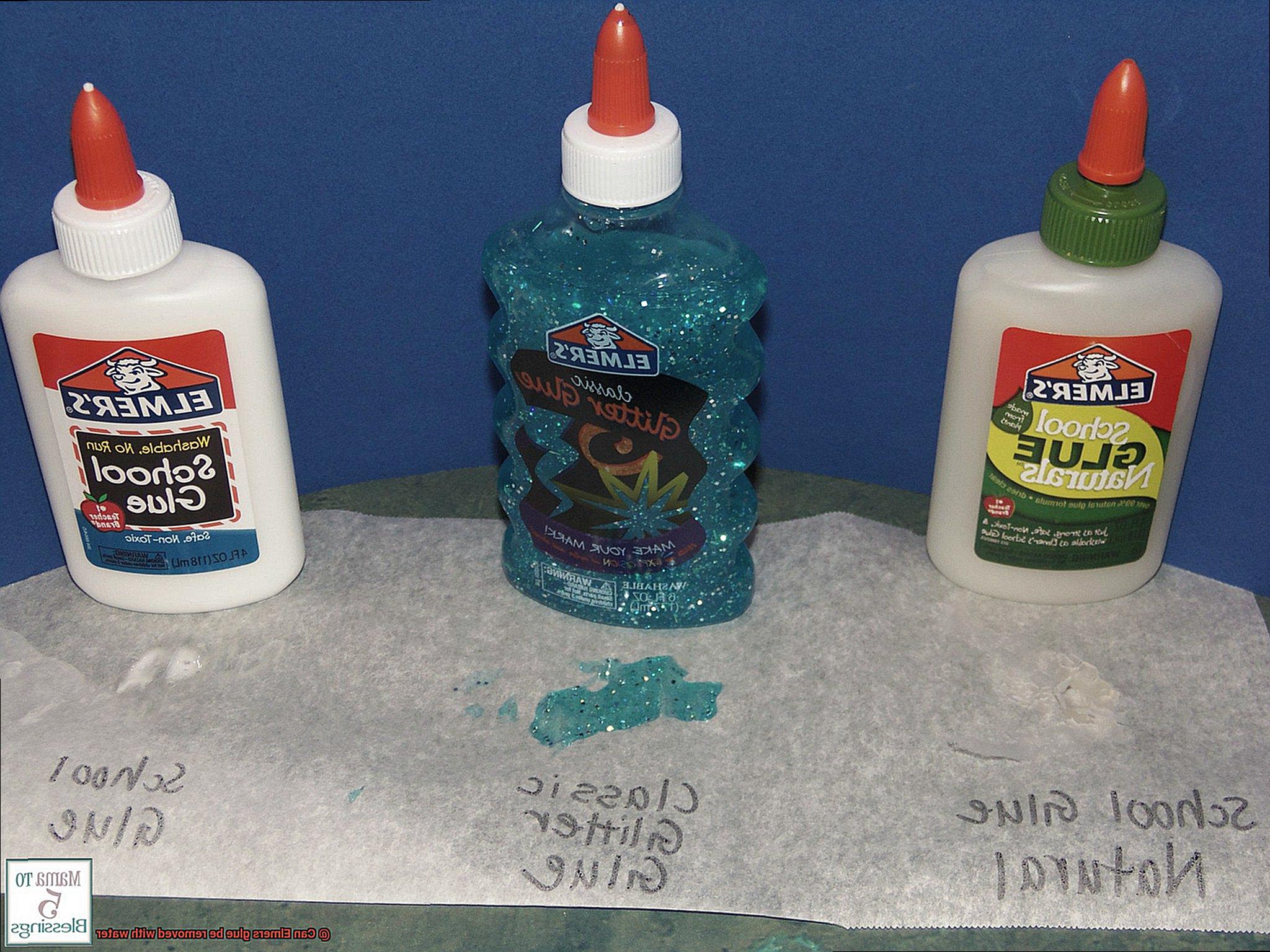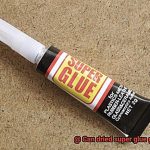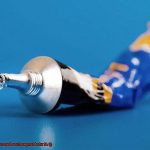Are you in the middle of a creative project when suddenly, you realize that there’s excess Elmers glue that needs to go? Or perhaps your child has gotten a little too enthusiastic with the glue and now it’s all over their shirt? Fear not, because we’re here to answer the burning question on your mind: can Elmers glue be removed with water?
Elmers glue is a staple adhesive for DIY enthusiasts and students alike. It’s versatile and easy to work with, but sometimes things can get messy. That’s when you need to know how to remove excess glue.
Water is often the first thing people turn to when trying to remove glue. But does it really work? The short answer is yes, according to experts. However, the method may vary depending on the type of Elmers glue and surface it has been applied to.
In this blog post, we’ll dive into the science behind Elmers glue and explore effective ways to remove it using water. We’ll also debunk common misconceptions and pitfalls that can occur during the removal process. So get ready to tackle this sticky situation like a pro.
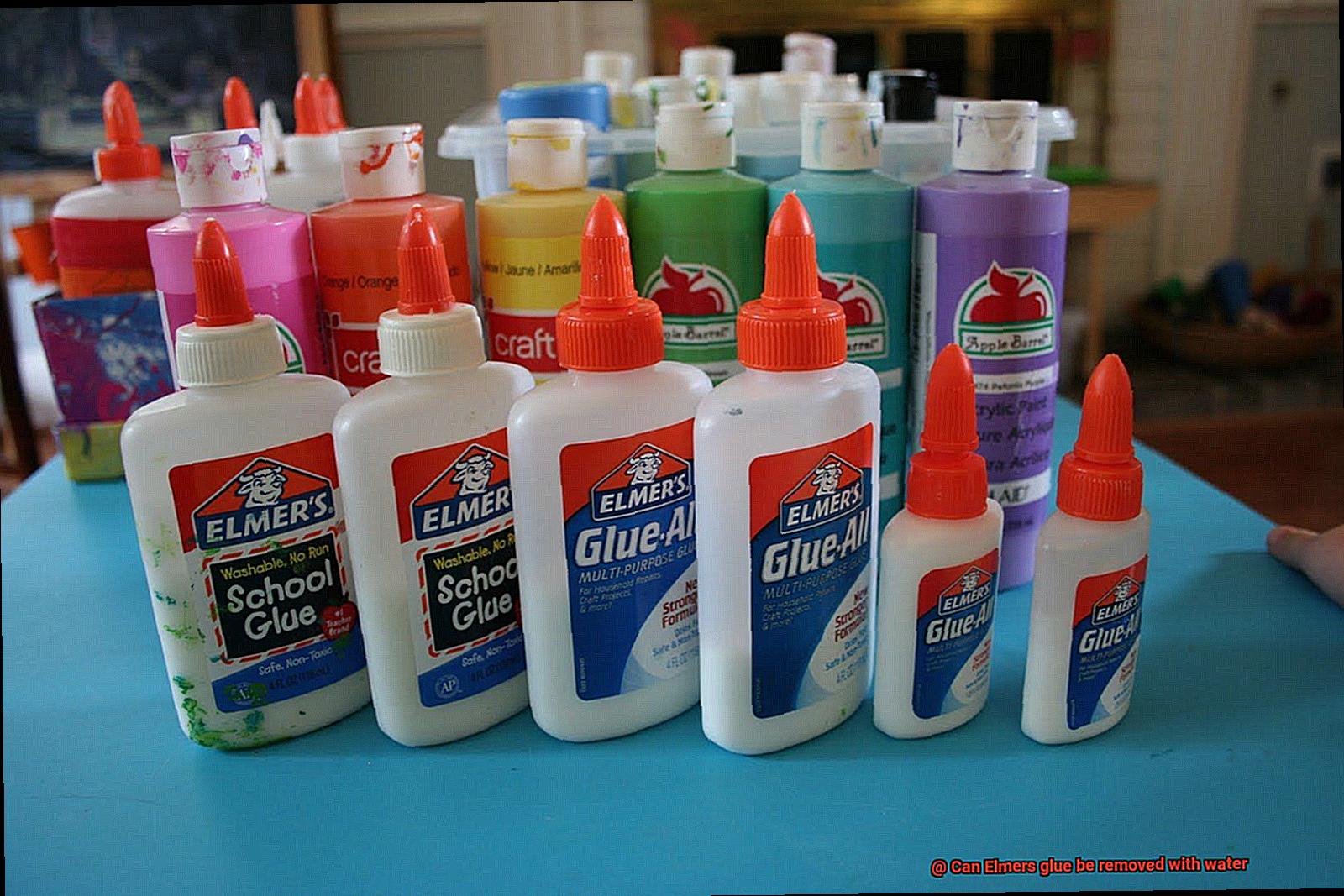
Types of Elmer’s Glue
Contents
Elmer’s glue has been a trusted brand of adhesive for many years, and for good reason. With a wide variety of types of glue available, Elmer’s caters to the unique needs of every project. From classrooms to crafting rooms, let’s dive into the different types of Elmer’s glue available.
First up is the classic white school glue. This staple is perfect for everyday use on surfaces like paper, cardboard, and even fabric. It’s non-toxic and safe for kids to use, making it a top choice for school projects. Plus, it’s water-soluble, so clean up is a breeze.
For those working with transparent surfaces like glass or plastic, clear glue is the way to go. This type of glue dries clear, ensuring that your finished project looks seamless and professional. And yes, just like the white school glue, it’s also water-soluble.
Elmer’s washable formula is a top choice for any project involving fabric. Whether you’re creating a costume or a collage, this glue washes out effortlessly from clothing. And of course, it’s non-toxic and water-soluble.
Next up is the disappearing purple glue. This unique formula goes on purple but dries clear, making it easy to see exactly where you’ve applied it. It’s perfect for paper and other porous surfaces where precision is key.
Last but not least is Elmer’s wood glue, specifically formulated to bond wood together permanently. This waterproof glue dries clear and is ideal for outdoor woodworking projects that need to withstand harsh weather conditions.
How to Remove Water-Soluble Elmer’s Glue
Elmer’s glue is a go-to adhesive for many of us, but accidents can happen. The good news is that removing water-soluble Elmer’s glue from different surfaces is not as daunting as it seems. As an expert in glue removal, I am here to share my top tips and tricks with you. Let’s dive in.
Removing Elmer’s Glue from Fabric or Clothing
Spilling glue on your clothes is frustrating, but don’t fret. Start by scraping off any excess glue with a dull knife or spoon. Then, soak the affected area in cold water for at least 30 minutes. Gently rub the fabric together to help loosen the glue. If the stain persists, try using a mixture of equal parts white vinegar and water to gently scrub the area before washing as usual.
Removing Elmer’s Glue from Hard Surfaces
If Elmer’s glue has left a mark on hard surfaces like wood or plastic, start by using a damp cloth to wipe away any excess glue. If the glue has hardened, you can try using a mixture of warm water and dish soap to soften it before wiping it away. Avoid using hot water as it can cause the glue to set even further.
Test Cleaning Solutions Before Applying
It is crucial to note that while Elmer’s glue is water-soluble, some types of glue may not be. Always check the label or manufacturer’s instructions before attempting to remove any adhesive from a surface. Additionally, test any cleaning solutions on a small, inconspicuous area before applying them to larger stains or areas.
Act Quickly Before the Glue Dries
The key to removing Elmer’s glue effectively is to act quickly before it dries and hardens. As soon as you notice a spill or drip of glue, grab a damp cloth, and start wiping it away. It’s easier to remove the glue when it’s still wet.
Don’t Give Up.
If the glue stain persists after multiple attempts at removal, don’t give up. Try using a different cleaning solution or seek professional help. With a little persistence and patience, even the toughest glue stains can be removed.
Removing Non-Water-Soluble Elmer’s Glue
Removing non-water-soluble Elmer’s glue can be a daunting task, but fear not. As an expert in glue removal, I have some fantastic methods for getting rid of that stubborn glue.
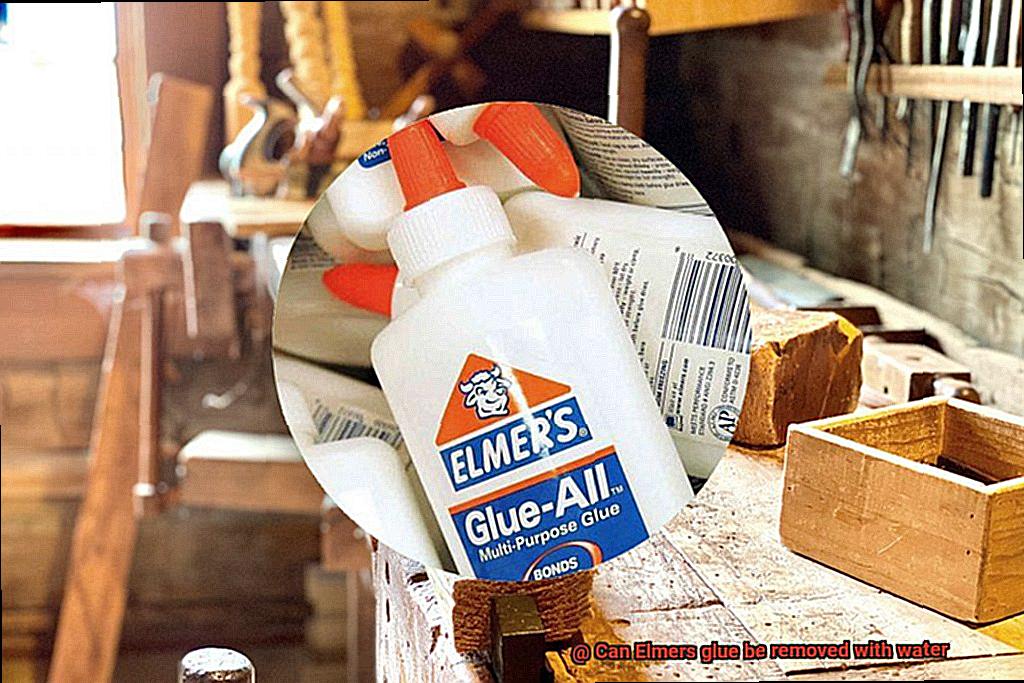
Rubbing alcohol is one of the best ways to dissolve non-water-soluble Elmer’s glue. It breaks down the glue, making it easier to remove from surfaces. You can use this method by applying a small amount of rubbing alcohol onto a cloth or cotton swab and gently rubbing the affected area until the glue starts to dissolve. Remember to work in a well-ventilated area and avoid any contact with open flames or sparks, as rubbing alcohol is highly flammable.
Another household staple that works wonders for removing non-water-soluble Elmer’s glue is vinegar. Mixing equal parts white vinegar and warm water in a bowl creates a powerful solution that can dissolve the glue and make it easier to remove. Dip a cloth or sponge into the solution and apply it directly to the affected area. Let the vinegar mixture sit on the glue for several minutes before gently scrubbing the area with a soft-bristled brush or cloth.
In case rubbing alcohol or vinegar don’t do the trick, commercial adhesive removers are also available. These products are specifically designed to dissolve stubborn adhesives and can be found at most hardware or home improvement stores. Always read and follow instructions carefully when using any type of adhesive remover, as some products may require protective gear such as gloves or goggles.
Effectiveness of Using Water to Remove Elmer’s Glue
Well, it’s not as simple as a yes or no. The effectiveness of water in removing Elmer’s glue depends on various factors.
Firstly, take into account the type of surface the glue is on. If it’s on a porous surface such as paper or fabric, water can penetrate the material and loosen the adhesive. However, if the glue is on a non-porous surface such as plastic or metal, water may not be able to break down the glue as effectively.
Another crucial factor to consider is how long the glue has been left to dry. The longer it has had to set, the more difficult it can be to remove with just water.
If you’re having trouble removing Elmer’s glue with water alone, adding a small amount of soap or detergent to the water can help break down the glue and make it easier to remove. However, before trying this method, test it on a small, inconspicuous area first to ensure that it won’t harm or discolor the surface.
While water can be helpful in removing Elmer’s glue from certain surfaces, its effectiveness can vary depending on factors such as surface type and drying time. In some cases, more potent methods such as using vinegar or rubbing alcohol may be necessary for stubborn glue stains.
Different Solvents Used for Non-Water-Soluble Types of Elmer’s Glue
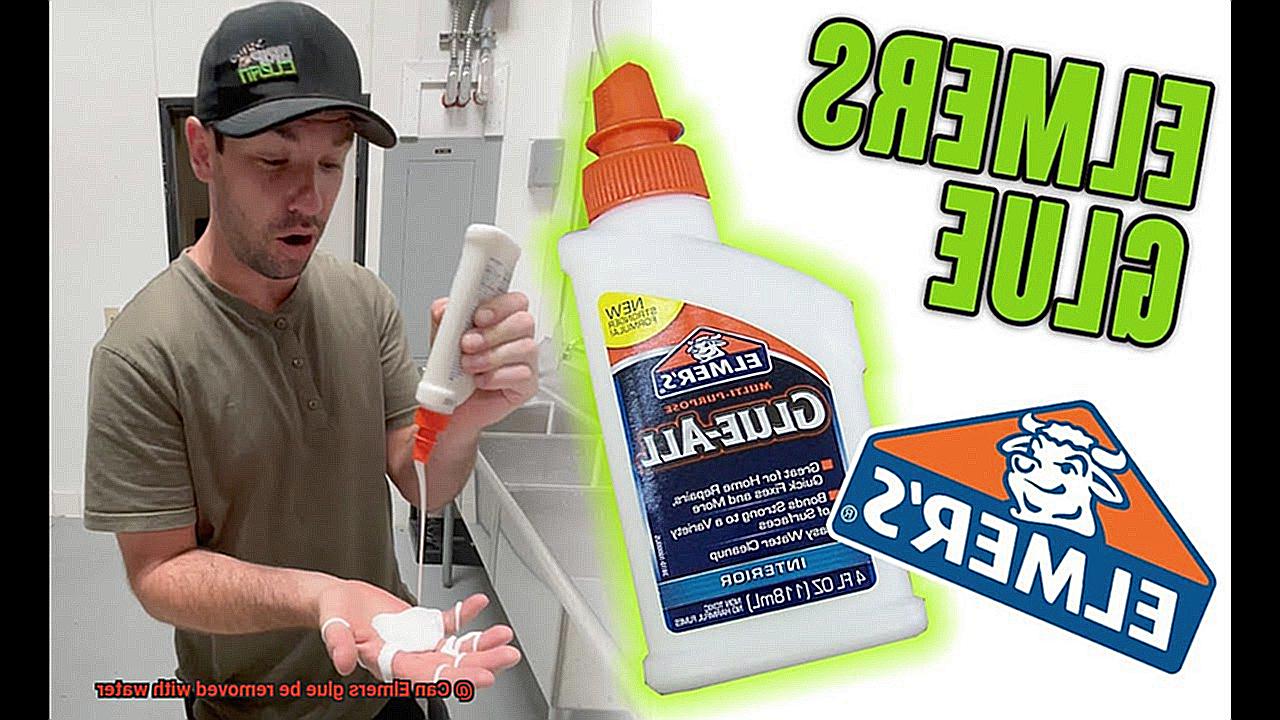
Fear not, fellow glue warrior. As an expert in this field, I can provide you with some valuable insights into the different solvents that can be used to dissolve non-water-soluble types of Elmer’s glue.
Acetone is one of the most common solvents used to remove non-water-soluble Elmer’s glue. This colorless liquid is found in nail polish remover and paint thinner and breaks down the chemical bonds in the glue, making it easier to remove. However, be cautious when using acetone as it can cause damage or discoloration on some surfaces.

For a less harsh option, try using rubbing alcohol. This solvent contains isopropyl alcohol, which dissolves the glue and is safe to use on most surfaces. However, it may not be as effective as acetone.
Goo Gone is another popular solvent that works wonders in removing adhesive residue, including Elmer’s glue. It’s a petroleum-based liquid that breaks down the bonds between the glue and the surface, leaving behind no residue. Goo Gone is safe to use on most surfaces and won’t cause any damage or discoloration.
If you prefer a more natural approach, try using vegetable oil, vinegar, or baking soda paste. While these options may not be as effective as acetone or rubbing alcohol, they’re safer to use on delicate surfaces.
Factors That Affect the Ease of Removal with Water
The ease of removal with water is affected by various factors that you need to keep in mind. Let’s dive into the details of these factors and how they affect the removal process.
One of the most critical factors that can impact the ease of removal is the amount of glue applied. If too much glue has been used, it may take longer to dissolve in water, making it more challenging to remove. However, if only a small amount has been applied, it may dissolve quickly and be easily removed.
Another factor that plays a significant role in removal is the type of surface the glue is on. Porous surfaces like paper or fabric are easier to remove as water can seep into the material and loosen the glue. However, if the glue is on non-porous surfaces like plastic or glass, it may be more difficult to remove as water cannot penetrate them.
The temperature of the water used also affects the ease of removal. Warm water is typically more effective in dissolving glue than cold water as it can break down the adhesive properties of the glue more easily. However, hot water should be avoided as it can cause damage to some surfaces.
Lastly, the length of time the glue has been in place can impact how easy it is to remove with water. If left to dry for an extended period, it may require more effort to remove, even with water. It’s best to try and remove the glue as soon as possible for optimal results.
Also Read: Will Elmer’s glue dissolve in water?
Conclusion
In summary, Elmer’s glue is a remarkable adhesive that comes in handy for various DIY projects. It is user-friendly and easy to work with, but sometimes accidents happen, and excess glue may need to be removed from surfaces or clothing. The big question on everyone’s mind is whether water can remove Elmer’s glue.
The answer is yes, but the effectiveness of water in removing the glue depends on several factors such as surface type, drying time, and amount of glue applied. Water-soluble Elmer’s glue can be easily removed using water and soap or detergent if necessary. However, non-water-soluble types require solvents like acetone or rubbing alcohol to dissolve the glue effectively.
It is crucial to test any cleaning solutions on a small area before applying them to larger stains or areas. Acting quickly before the glue dries and hardens is key to removing Elmer’s glue effectively. If the stain persists after multiple attempts at removal, don’t give up. Try using different cleaning solutions or seek professional help.
In conclusion, it’s safe to say that with persistence and patience, even the toughest of Elmer’s glue stains can be removed.

